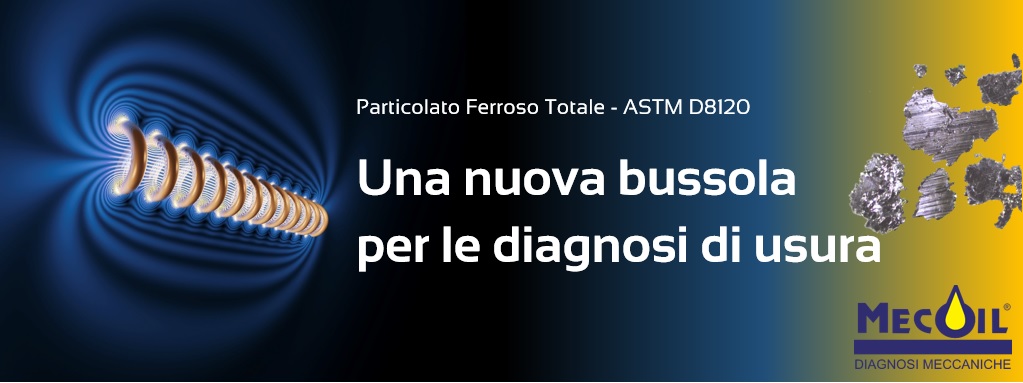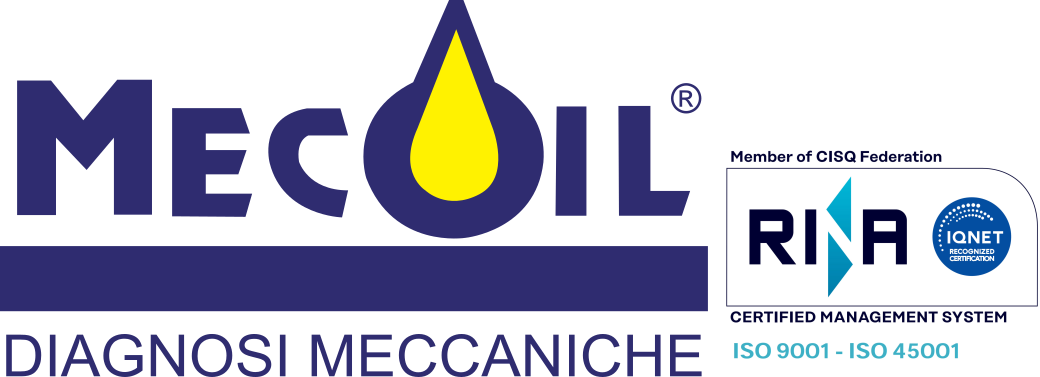 In 2012, Noria Corporation launched a survey aimed at readers of Machinery Lubrication magazine about the significance of particulate matter in the lubricant in operation (“Particles: Friend or Foe?”). The survey asked if, in modern industrial maintenance procedures, the particulates detected by oil analysis were seen as a problem to be removed or as a signal to be interpreted: over 2/3 of the readers, mostly from the US, said that their presence is a valuable indicator for the condition monitoring of critical industrial machinery. In concurrence with this growing interest in predictive analysis of oil in operation, several new technologies have emerged in the last decade for a more effective diagnosis of wear phenomena.
In 2012, Noria Corporation launched a survey aimed at readers of Machinery Lubrication magazine about the significance of particulate matter in the lubricant in operation (“Particles: Friend or Foe?”). The survey asked if, in modern industrial maintenance procedures, the particulates detected by oil analysis were seen as a problem to be removed or as a signal to be interpreted: over 2/3 of the readers, mostly from the US, said that their presence is a valuable indicator for the condition monitoring of critical industrial machinery. In concurrence with this growing interest in predictive analysis of oil in operation, several new technologies have emerged in the last decade for a more effective diagnosis of wear phenomena.
It all began after World War II, when the analysis of oil began to be used for prognostic purposes first in the field of civil railways, then in the military, mainly using the atomic emission spectrometry SOAP (Spectrometric Oil Analysis Program) for the determination of metal wear elements in ppm. Soon people realized that this kind of monitoring allowed to optimize maintenance based on conditions and to improve operational safety, especially for aircrafts, through the study of the trends of individual wear metals.
The main limitation of SOAP elemental spectrometric analysis lies in the inability to quantitatively detect particulates larger than 10 µm: as a result, the trends of individual metals that are monitored are only related to “fine” wear. Despite this, the quantitative analysis of metals in ppm remains the main diagnostic tool able to “predict” the phenomena of incipient wear: this is especially true in mechanisms that use inline oil filters and low amounts of oil, like endothermic road engines or aircraft turbo-engines. In these systems, the oil filter continuously removes large particles, and SOAP spectrometry alone is sufficient for an accurate description of current wear phenomena.
On the other hand, there are different types of systems in which the presence of medium to large particulates is possible and can be considered a valuable source of information on the condition of the machinery. A holistic approach to wear monitoring cannot, therefore, disregard the detection of particulates that escape SOAP spectrometric analysis, which therefore must necessarily be associated with another test that can “see” particulates of sizes above 10-15 µm.
This approach is necessary in the case of machines with large quantities of lubricant (such as turbines, hydraulic systems, paper mill machines) where the removal of particulates by filtration or sedimentation is not immediate, and newly released particles from wear can be collected from an oil sample. In such machines, Mecoil recommends the monitoring of the ISO 4406 code by means of “intelligent” particle counting with the Lasernet (ASTM D7596) apparatus.
Even in machines without filtration systems, metal wear particles can remain in the lubricant, accumulate over time and possibly cause further wear: this is mainly the case for industrial gears lubricated in oil bath, or transmissions, gearboxes and differentials. For the condition monitoring of this kind of machines, Mecoil has introduced the analysis of Total Ferrous Particulate Matter, an innovative analysis tool that detects and quantifies magnetic particulate matter independently of size, from nanometer to millimeter.
The oil is analyzed as it is, without dilutions or preparations: it is only necessary to homogenize the sample as for the SOAP analysis, transfer the oil into the test tube and analyze it with the special high sensitivity magnetometer. The measurement of ferrous particulates is provided in ppm (mg/kg) and is thus comparable with the concentration of “fine” iron detected by SOAP analysis, providing information on the size of the ferrous particulate and its nature: there are cases in which iron is present in the form of non-magnetic particles (rust, some types of stainless steel).
The parallel with the SOAP analysis does not end there: under normal conditions, the trend of Total Ferrous Particulate accurately follows the trend of fine iron concentration, so that you can use the same mathematical tools to monitor both indicators of wear. In addition, the analysis results of the two techniques have a comparable accuracy (repeatability).
A method with similar characteristics, but with different calibration, returns a dimensionless index called PQ Index, which is an indication of the amount of magnetic particulates in the oil. The fundamental difference between the Total Ferrous Particulate and the PQ Index is not the unit of measurement (ppm versus dimensionless), but the way of exposure of the sample to the magnetic field that performs the measurement. To determine the PQ Index, in fact, the sample is normally analyzed inside its original closed container, without decanting it, simply by placing the inverted container on the magnetometer. This procedure makes it so that not all particles settle at the same rate, in the inverted container: the lighter (smaller) particles will settle more slowly than the larger ones, and this phase is also influenced by the differences in sample temperature, by the viscosity and by the amount of sample in the container. As a result of these combined influences, the PQ Index tends to be less sensitive to small magnetic particles in viscous oils, especially when analyzed at low temperatures or with a full container.
In addition, unlike the analysis of the FP Index, the analysis of Total Ferrous Particulate has recently been standardized by the emission of an international standard method, ASTM D8120 “Standard Test Method for Ferrous Debris Quantification”.
Mecoil has experimented with the application of this innovative method since the beginning of 2017, gaining considerable experience on various cases and on the combined evaluation of Total Ferrous Particulate with other already available diagnostic technologies, such as SOAP/RDE spectrometry and Lasernet particle counter. We have observed that its application for maximum diagnostic effectiveness is in transmissions, gearboxes, differentials and industrial gears, especially when the oil filter is not present or has relatively wide meshes (>30 µm).
Throughout the year, the monitoring of Total Ferrous Particulate has already made it possible to specifically report wear phenomena that would otherwise have been underestimated or detected with less advance. For this reason, Mecoil has decided to include the analysis of Total Ferrous Particulate in some analysis packages (Standard and Standard F) that are specific for transmissions and gears, also making the test available on request or in analysis packages formulated ad hoc based on customer needs.
A new “compass” to diagnose wear!
